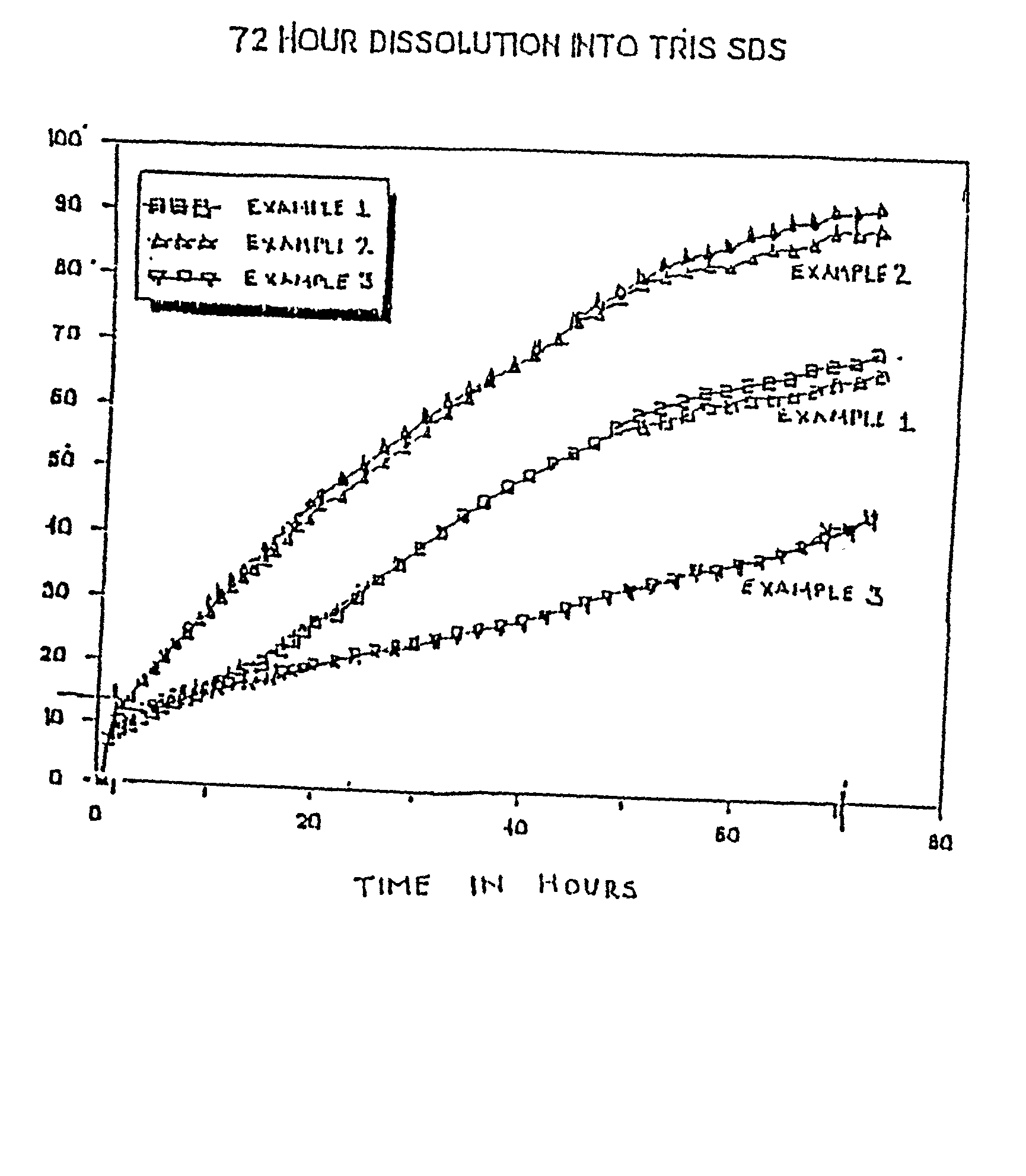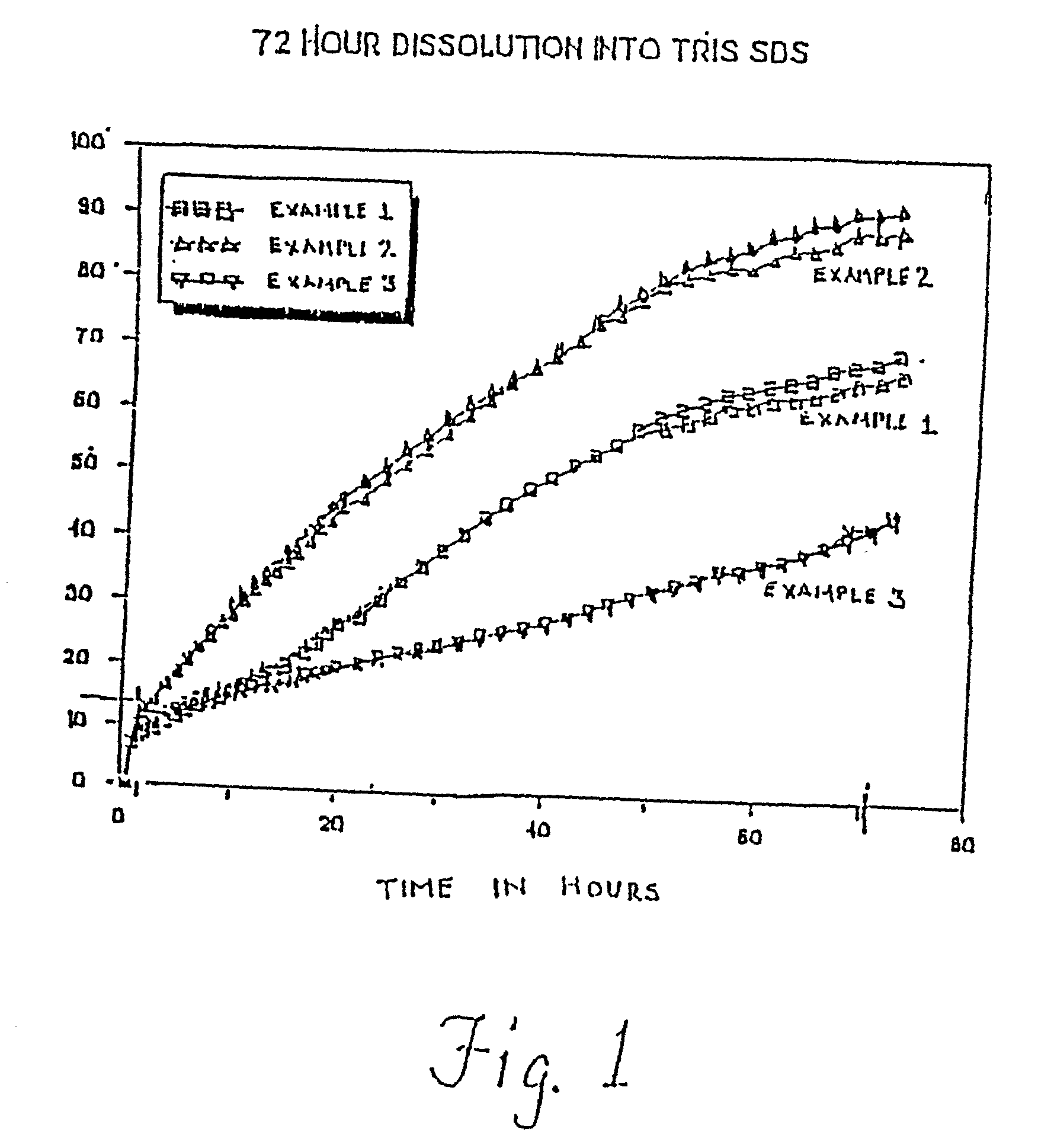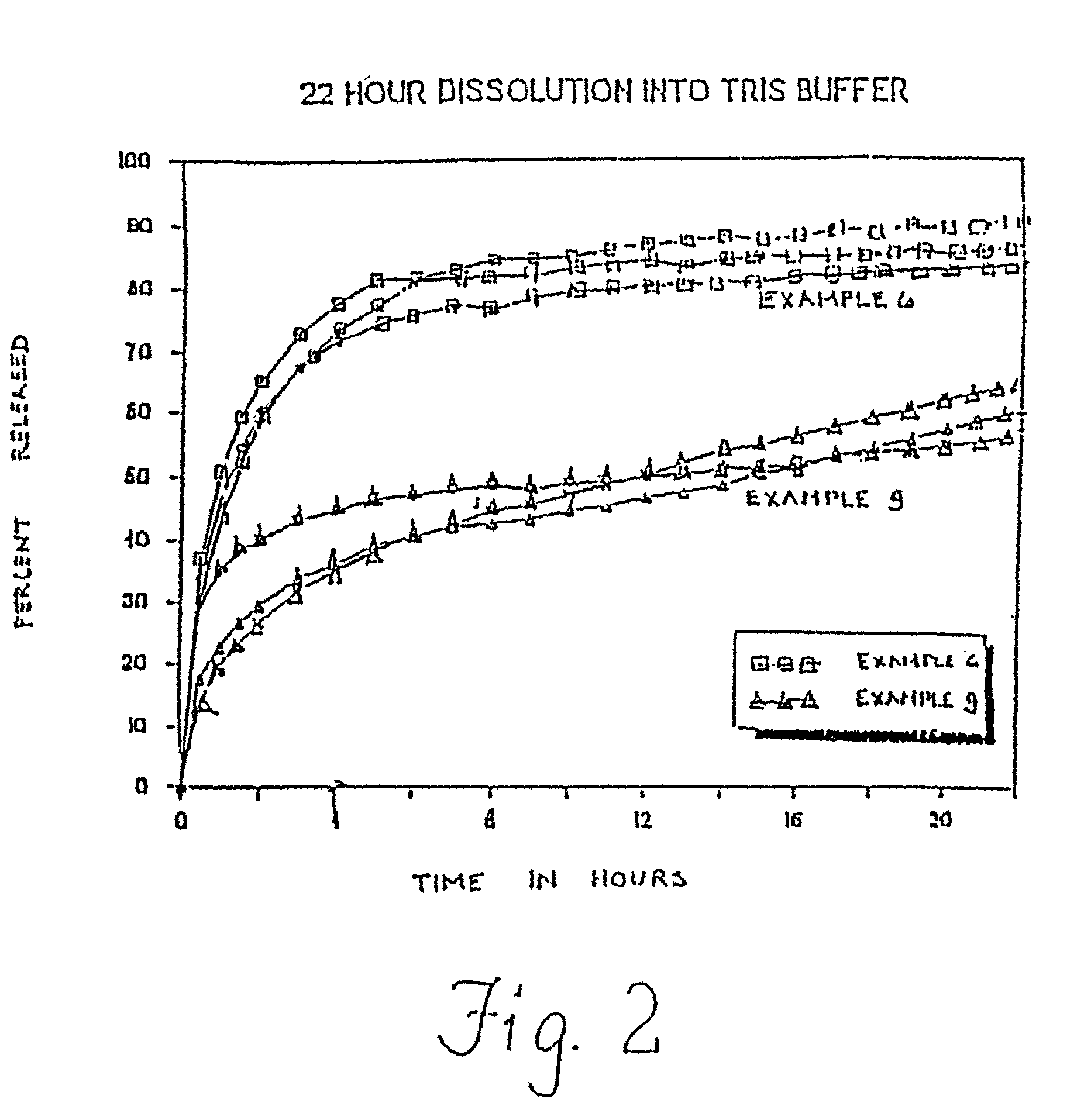Methods for providing safe local anesthesia
- Summary
- Abstract
- Description
- Claims
- Application Information
AI Technical Summary
Benefits of technology
Problems solved by technology
Method used
Image
Examples
examples 1-3
Solvent Extraction Process
[0093] In Examples 1-3, bupivacaine microspheres are prepared by dissolving the bupivacaine base and the polymer in ethyl acetate. The polymer is 50:50 poly (D,L) lactic co-glycolic acid which has a mole percent composition of 50% lactide and 50% glycolide. This dispersed phase is then added to a solution of polyvinyl alcohol (PVA) in water (the continuous phase) with stirring. The resulting emulsion is monitored for droplet size, which is in turn controlled by the rate of stirring. The emulsion is then added to water to extract the solvent and to harden the microspheres. The mixture is then filtered and the microspheres are dried under vacuum at room temperature. The desired particle size fraction is then collected by sieving.
[0094] Each of Examples 1-3 are prepared such that the microspheres have a relatively high drug content. In Example 1, the theoretical drug content is about 60%, and the size of the microspheres range from about 45 to about 90 microns...
examples 4-9
Spray-Dried
[0098] In Examples 4-9, the bupivacaine base and the polymer utilized in Examples 1-3 are once again dissolved in ethyl acetate, but this time the microspheres are obtained by spray-drying the solution. Example 4 utilizes a relatively high drug content, whereas Example 5 utilizes a relatively low drug content. In Examples 7-9, microspheres having a substantially similar drug content to Examples 4-5 are prepared using the solvent extraction technique utilized in Examples 1-3. Details of the formulations are presented in Table 2 below.
2 TABLE 2 Drug Content Formulation (Theoretical) Yield Process Ex. 4 49% 55% Spray-Dried Ex. 5 29% 64% Spray-Dried Ex. 6 45% -- Spray-Dried Ex. 7 47% 62% Solvent Extraction Ex. 8 28% 74% Solvent Extraction Ex. 9 60% 60% Solvent Extraction
[0099] With regard to Example 9, the actual percentage of bupivacaine base in the microspheres is 51%, the molecular weight of the 50:50 dl-PLGA polymer is 18,000, the microspheres were about 45-63 microns, an...
example 10
In Vitro Release Characteristics of Bupivacaine from Microspheres
[0103] Studies were carried out in vitro to monitor the rate of release of bupivacaine from the 65:35 PLGA, 75:25 PLGA and PLA 100 microspheres loaded with bupivacaine from about 70% to about 75%(w / w). Release experiments were carried out in vitro in stirred, buffered physiological saline, the buffer being changed at the points indicated on the accompanying graph (FIG. 4). The amount of bupivacaine in each of the supernatants, was quantitative spectrophotometrically. In some experiments, release of tritiated bupivacaine was quantitated. Generally, the PLA 100 microspheres released the bupivacaine most rapidly, with about 90% release attained in less than 1 day. PLGA 75:25 and 65:25 microspheres reached about 80% release after about 10 days, as illustrated by FIG. 4.
PUM
| Property | Measurement | Unit |
|---|---|---|
| Fraction | aaaaa | aaaaa |
| Fraction | aaaaa | aaaaa |
| Time | aaaaa | aaaaa |
Abstract
Description
Claims
Application Information
 Login to View More
Login to View More - R&D
- Intellectual Property
- Life Sciences
- Materials
- Tech Scout
- Unparalleled Data Quality
- Higher Quality Content
- 60% Fewer Hallucinations
Browse by: Latest US Patents, China's latest patents, Technical Efficacy Thesaurus, Application Domain, Technology Topic, Popular Technical Reports.
© 2025 PatSnap. All rights reserved.Legal|Privacy policy|Modern Slavery Act Transparency Statement|Sitemap|About US| Contact US: help@patsnap.com



